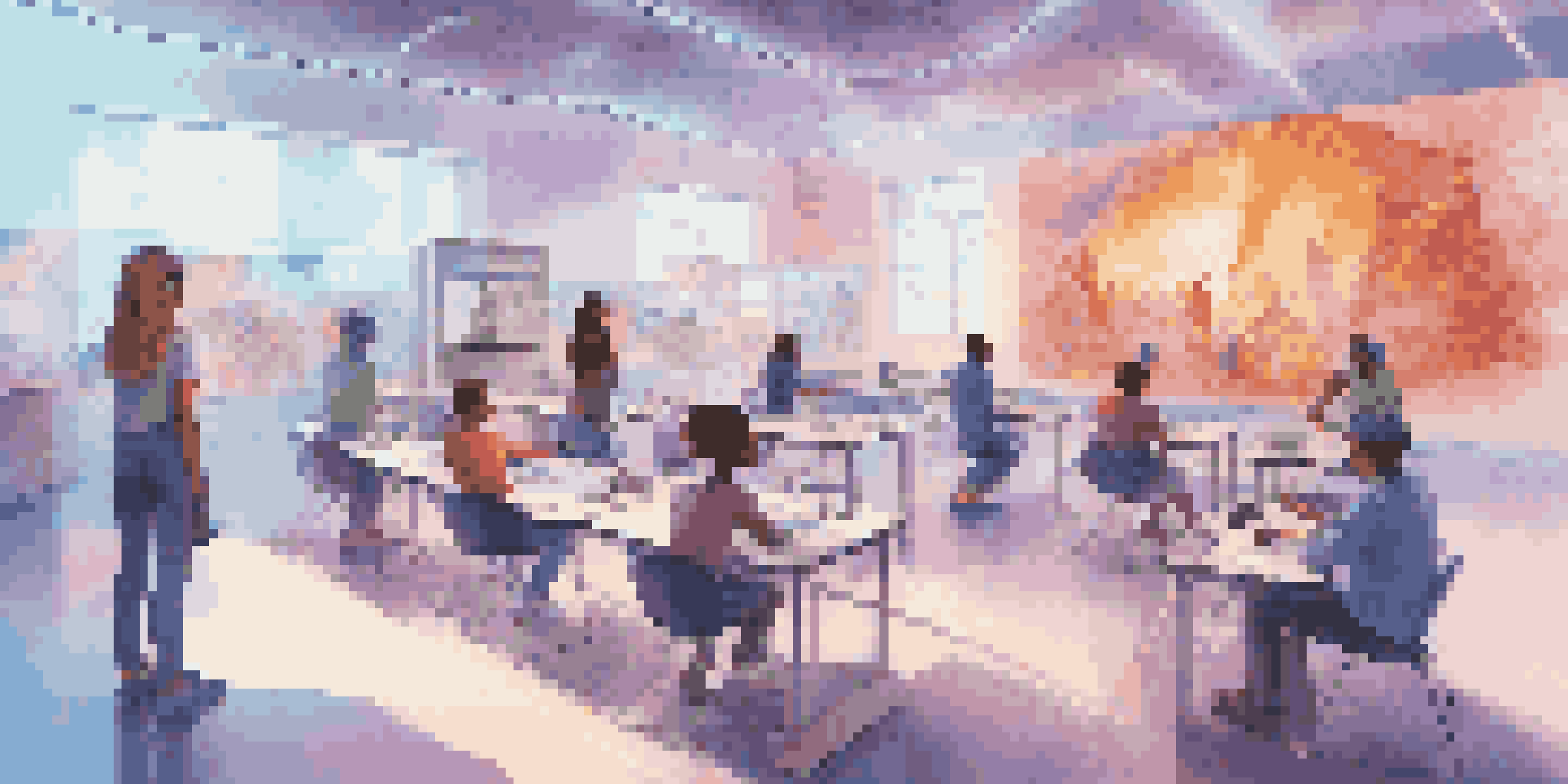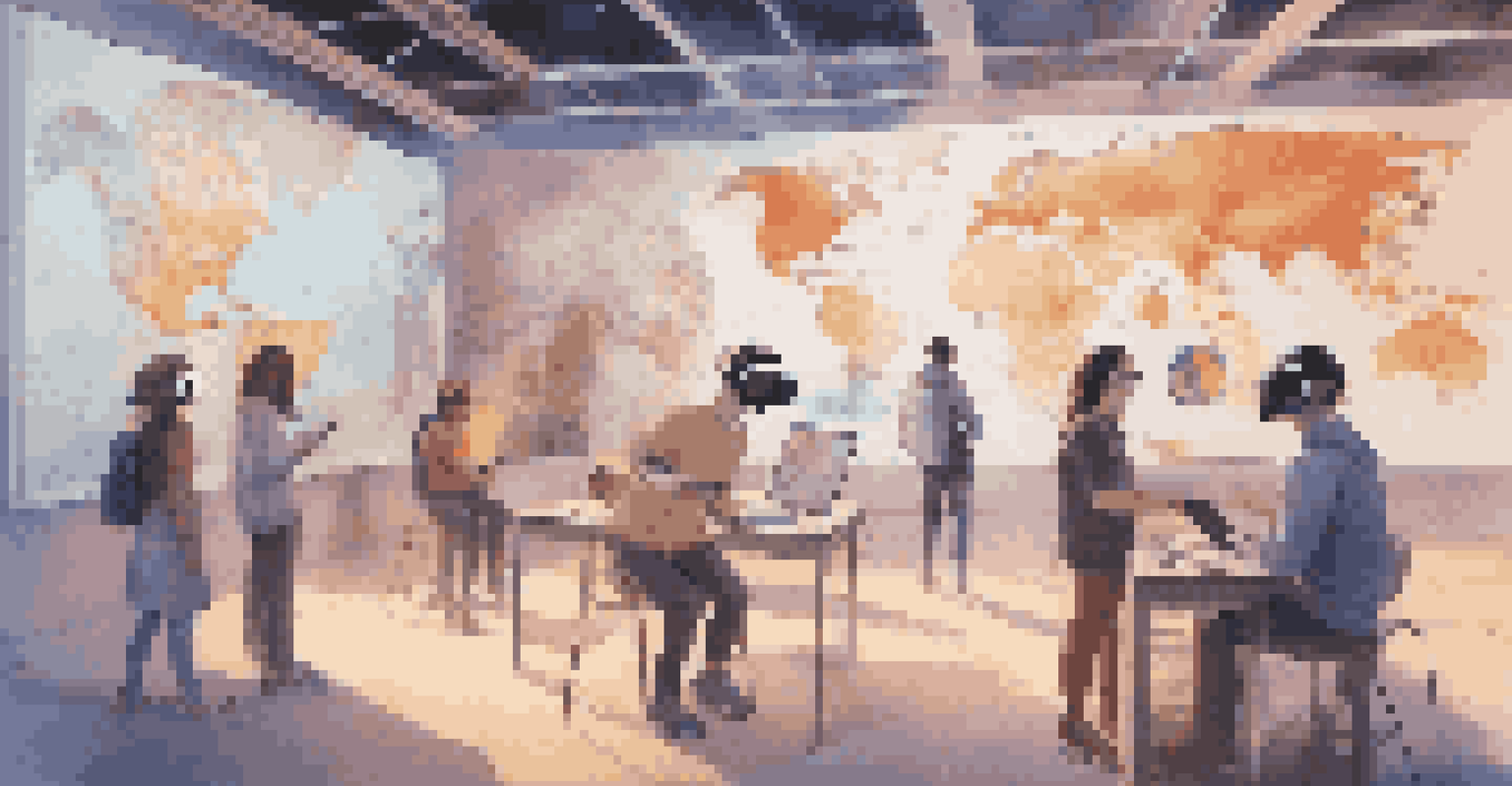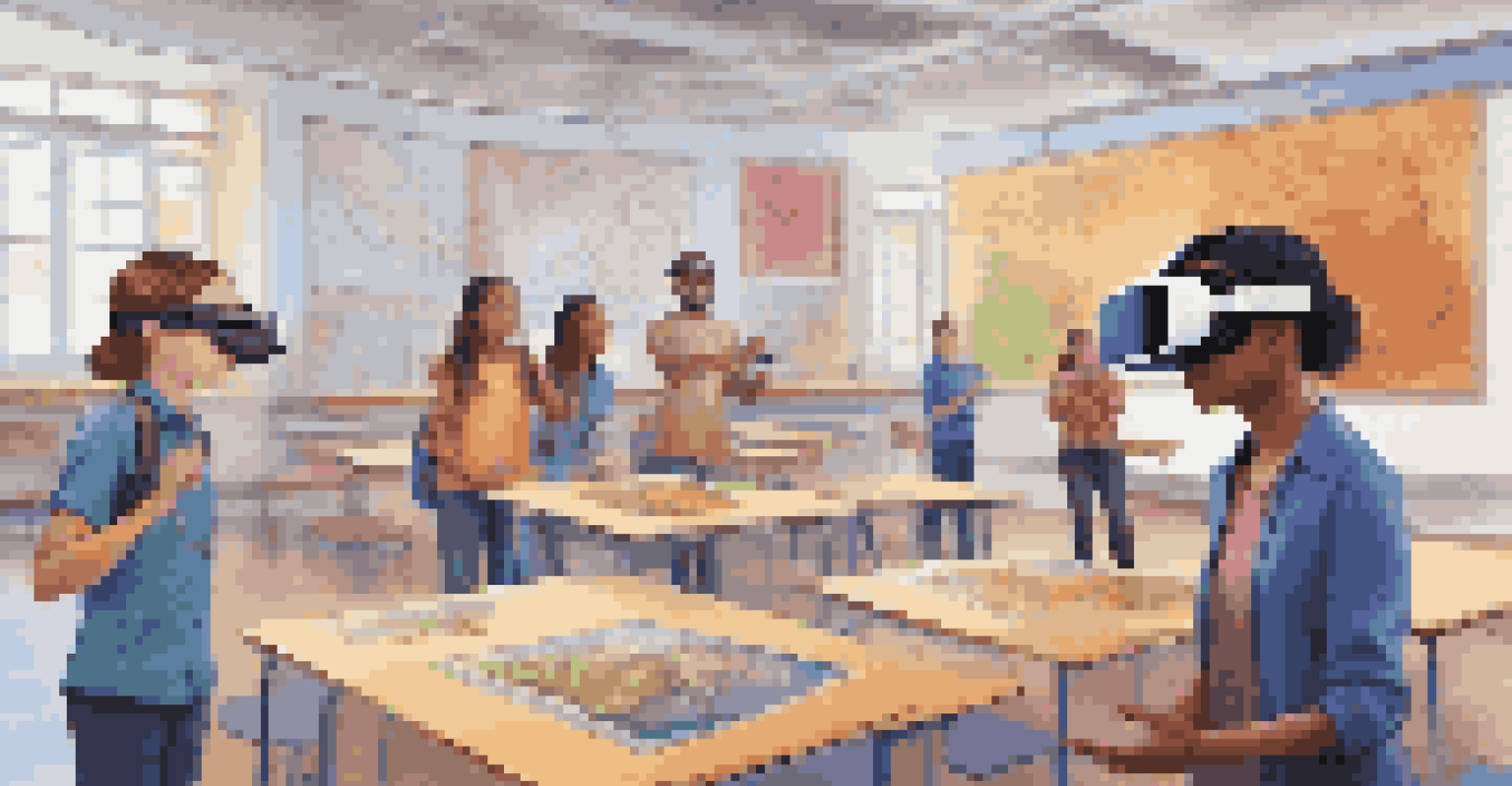Exploring the Role of Virtual Reality in Remote Learning

Understanding Virtual Reality and Its Potential
Virtual reality (VR) is an immersive technology that creates a simulated environment, allowing users to interact within a 3D space. It can transport learners to different places, from historical landmarks to outer space, making education more engaging. This ability to create lifelike experiences can enhance understanding and retention of complex subjects by providing a hands-on approach to learning.
Virtual reality is not just a technology; it's a new realm of possibilities for education.
For instance, imagine a student studying biology who can virtually explore the human body or a budding architect who can walk through a 3D model of their design. These experiences can lead to deeper insights and a more proactive learning attitude. It's like having a magic window that opens up a world of possibility right from your home.
As remote learning becomes more prevalent, integrating VR into educational platforms can bridge the gap between traditional learning and modern technological advancements. This fusion holds the promise of making education not just informative but transformative.
Benefits of VR in Remote Education
The most notable benefit of VR in remote education is its ability to enhance engagement. Unlike traditional online classes that may feel monotonous, VR can immerse students in interactive lessons that capture their attention. This increased engagement can lead to better participation and higher retention rates, making learning more effective.

Moreover, VR can cater to various learning styles. Visual learners benefit from seeing concepts in 3D, while kinesthetic learners can interact directly with virtual objects. This adaptability can help ensure that all students, regardless of their preferred learning method, find value in their educational experience.
VR Enhances Engagement in Learning
Virtual reality creates immersive experiences that significantly increase student engagement and retention in remote education.
Additionally, VR can break down geographical barriers, allowing students from different parts of the world to learn together. Imagine a classroom where students in London and Tokyo collaborate on a project in a virtual environment, sharing ideas and cultural insights that enhance their learning experience.
Challenges in Implementing VR for Remote Learning
While the potential of VR in remote learning is exciting, there are challenges to consider. One of the primary hurdles is the cost of VR equipment and software, which can be prohibitive for some educational institutions and students. Schools must weigh the investment against their budgets to determine if such technology is feasible.
The future of education is not about technology, but about how we can use technology to ignite curiosity and engagement in our students.
Another challenge is the need for robust technical support. Implementing VR requires a certain level of technical proficiency from both educators and students. Without adequate training and support, the technology could become a source of frustration rather than a helpful tool.
Moreover, not all subjects may lend themselves well to VR integration. While science and history may benefit greatly, other subjects might not see the same level of enhancement. It's crucial for educators to thoughtfully consider how and when to incorporate VR into their curricula to ensure it adds value rather than complicates the learning process.
The Role of Educators in VR Learning Environments
Educators play a pivotal role in the successful implementation of VR in remote learning. They're not just facilitators but also guides who help students navigate these new environments. Their ability to create meaningful connections between the virtual experiences and real-world applications is essential to maximizing the benefits of VR.
Teachers must also be equipped with the knowledge of how to effectively integrate VR into their lesson plans. This means understanding the technology, being aware of available resources, and being prepared to adapt their teaching methods to fit a VR framework. It’s similar to a chef learning to use a new kitchen gadget; they need to know how to use it to enhance their cooking, rather than let it complicate the process.
Challenges of VR in Education
Implementing VR in remote learning faces hurdles like high costs, technical support needs, and the suitability of subjects for this technology.
Moreover, educators need to foster an environment where students feel comfortable exploring VR. Encouraging experimentation and curiosity can lead to innovative learning experiences, where students are not just passive consumers of information but active participants in their education.
Case Studies: Successful VR Implementation
Several educational institutions have successfully integrated VR into their remote learning programs, demonstrating its effectiveness. For example, a university implemented a VR platform for its medical students, allowing them to practice surgical procedures in a risk-free environment. This hands-on experience helped students build confidence and skills that are critical for their future careers.
Another inspiring case is a high school that used VR to take students on virtual field trips around the world. This initiative not only enriched their geography curriculum but also sparked interest in global cultures, fostering a sense of connection and empathy among students. It’s like bringing the world into the classroom without the hefty travel expenses.
These examples highlight how, when done right, VR can create profound learning experiences. They serve as a roadmap for other educational institutions looking to embrace this technology, showcasing the potential for innovation in remote education.
Future Trends in VR and Remote Learning
As technology continues to evolve, the future of VR in remote learning looks promising. One emerging trend is the development of more affordable and accessible VR devices. Companies are working to create lightweight headsets that are budget-friendly, ensuring that more students can access this technology without financial strain.
Moreover, advancements in software are making it easier to create customized VR learning experiences. Educators can tailor lessons to meet specific learning objectives, allowing for a more personalized education. This adaptability can lead to improved outcomes, as students engage with content that resonates with their individual interests and needs.
Educators' Role in VR Success
Teachers are essential in guiding students through VR experiences, ensuring meaningful connections between virtual learning and real-world applications.
Lastly, the integration of artificial intelligence (AI) with VR could revolutionize remote learning. AI can analyze student interactions within the VR environment and provide real-time feedback, helping educators adjust their teaching strategies accordingly. This combination could create a highly responsive learning atmosphere that meets students where they are.
Conclusion: Embracing VR for Enhanced Learning
In conclusion, virtual reality has the potential to transform remote education by creating immersive and engaging learning experiences. While there are challenges to overcome, the benefits of increased engagement, personalized learning, and collaboration are hard to ignore. As educators and institutions embrace this technology, they open the door to innovative teaching methods that can redefine the learning landscape.
It's essential for schools to stay informed about technological advancements and consider how they can integrate VR into their curricula effectively. As we move forward, the collaboration between educators, technologists, and students will be key to unlocking the full potential of VR in education.

Ultimately, by embracing VR, we are not just enhancing remote learning; we are shaping the future of education itself. It’s an exciting time, and the possibilities are as limitless as the virtual worlds we can create.